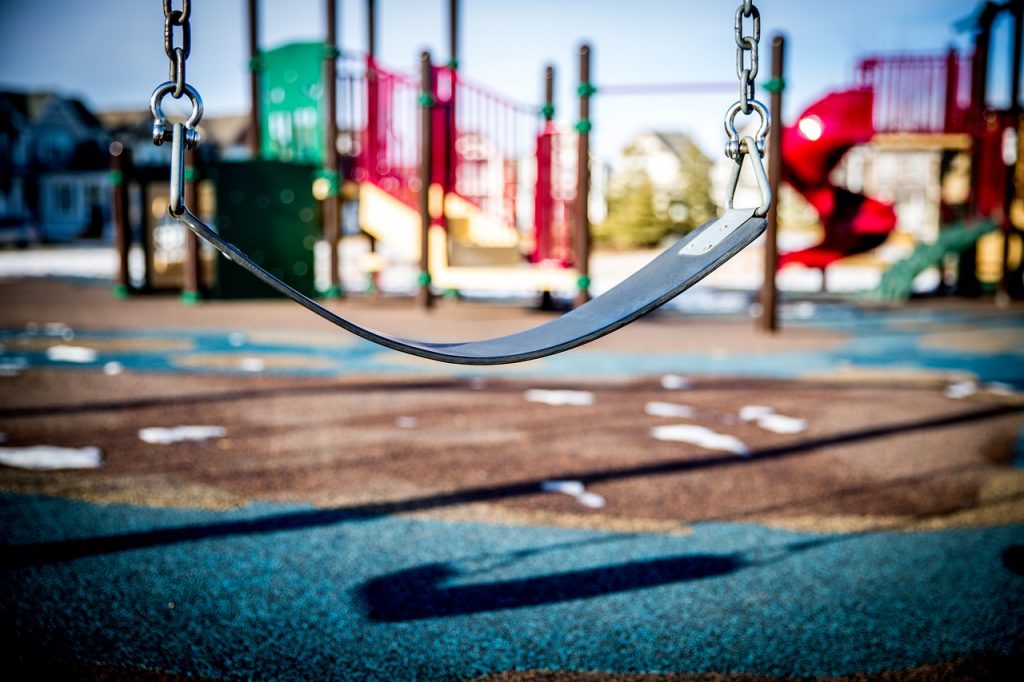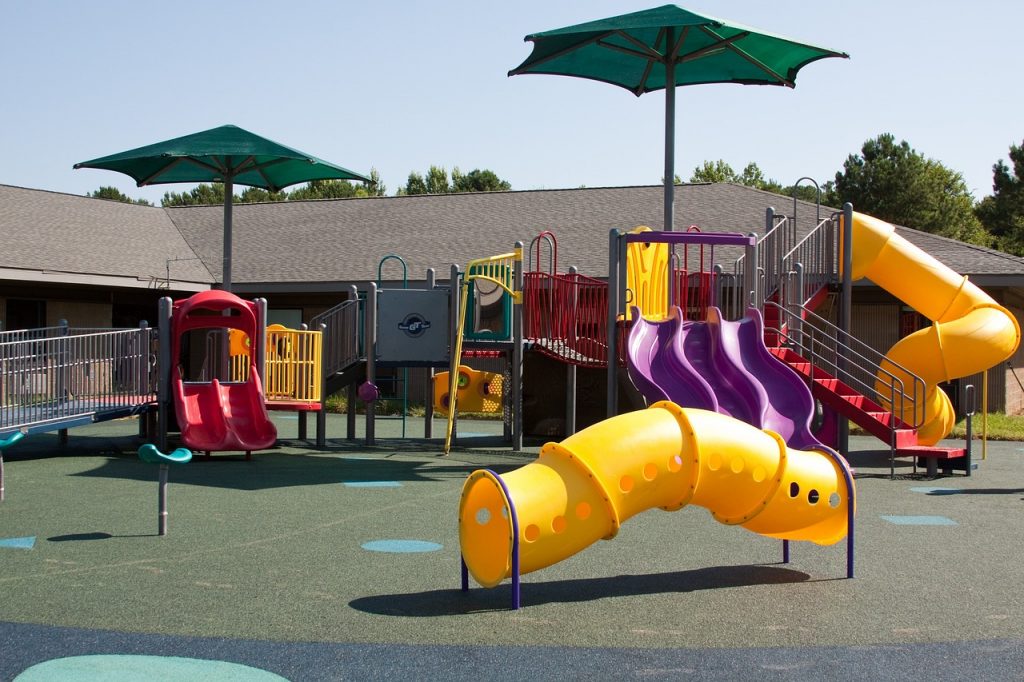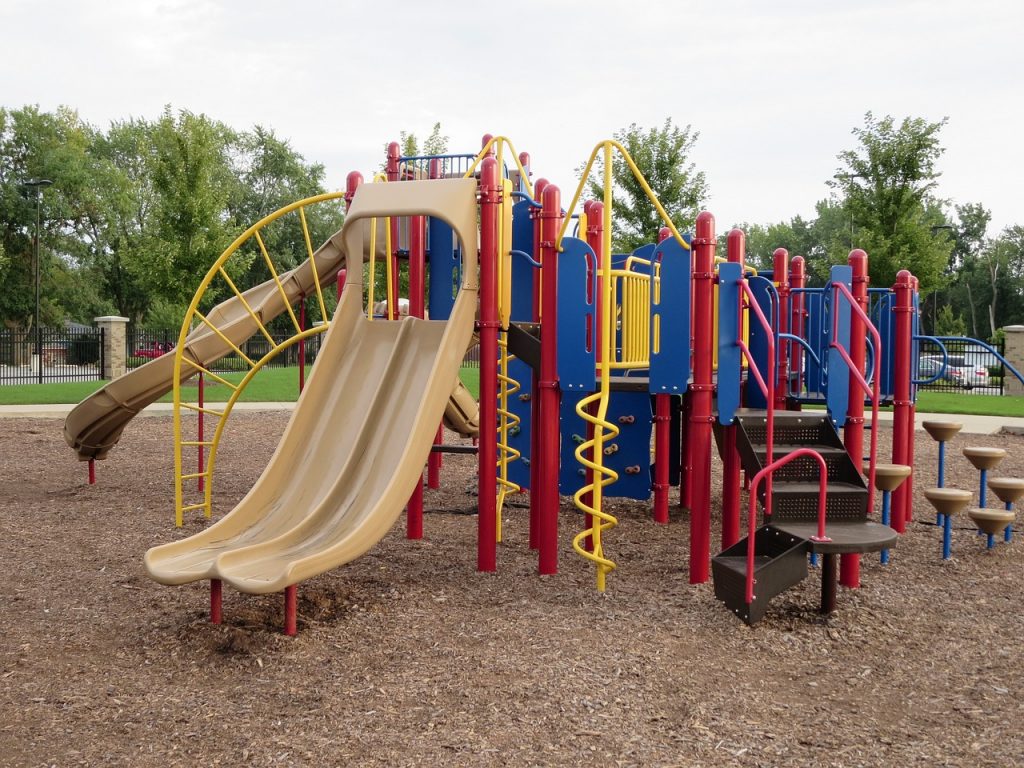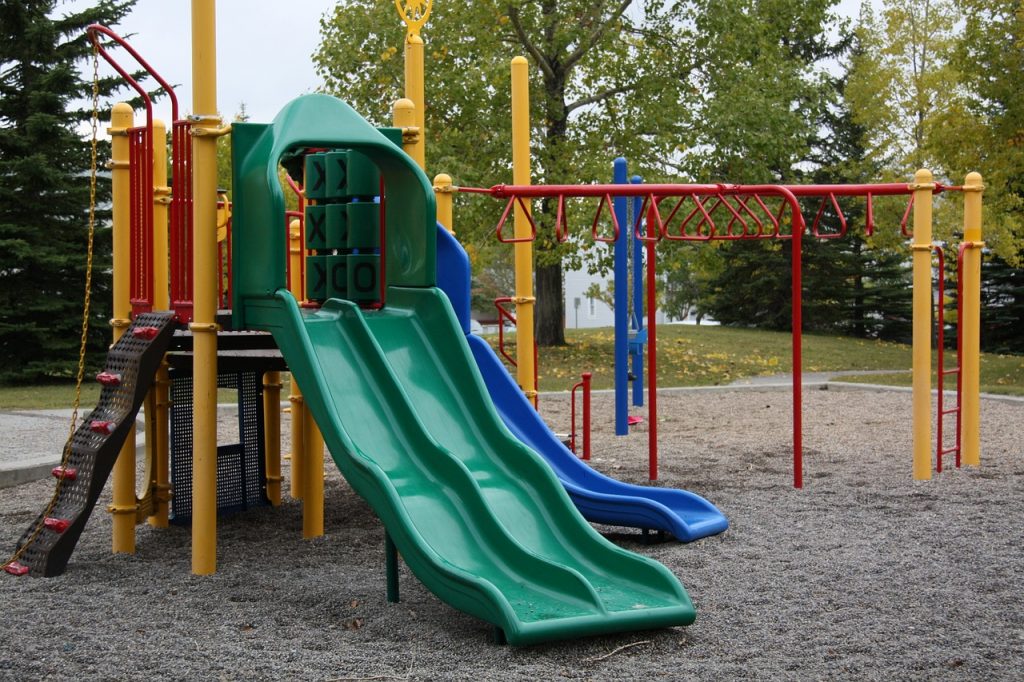What are the benefits of a playground?
When children play they learn a variety of skills such as:
- Gross Motor Skills
- Muscle Strength
- Coordination and Balance
- Motor Planning
- Social Skills
- Hand-Eye Coordination
- Executive Functioning
- Risk versus reward
And it promotes a healthy lifestyle with lowered risk of diabetes and obesity and promotion of heart and lung health

Playground Laws and Regulations
“Concerns about safe playgrounds are not new; the U.S. Consumer Product Safety Commission first published guidelines in 1981. But the rules have gradually become stricter, and in recent years, courts, insurance companies and state governments have given these rules the force of law…And therein lies one of the biggest problems for many parks, schools and churches. A medium-size structure that fully complies with federal guidelines costs around $100,000. Adding to the price are new regulations, issued in October 2000 under the Americans with Disabilities Act, requiring that at least half of every playground be accessible to children in wheelchairs.” (Harrison, 2001)
Changes to Playground Design
What do you remember from your playground days? These are the structures I remember playing on.



Now a days, we see structures that look more like this..



With the new rules and regulations and safety concerns the design of playground equipment has dramatically shifted to more structured play. Almost any playground you go to now a days will have steps, a slide, some type of small climbing apparatus, and a tunnel or bridge. While these are significantly safer, kids are limited to how they use the equipment, shifting play from unstructured to structured.
Among the changes are swing removal. Swings are becoming scarce across the nation in community and school playgrounds. Due to the concerns of safety and liability issues as well as having enough space, schools and community playgrounds have decided it best to remove swing sets.
A study in 2012 (Copeland et al.) identified that because the play equipment is now safer, children may find them more boring because they master it too quickly resulting in children improvising to challenge themselves like, walking up the slide backwards or climbing on poles or other parts that aren’t meant to be climbed. “Lead author Kristen Copeland, a researcher at Cincinnati Children’s Hospital Medical Center, commented that some participants said that overly strict safety standards made much of the climbing equipment uninteresting, thus reducing children’s physical activity.” (Walton, 2012)
German Construction
German playgrounds are now being built with danger in mind, to teach and expose children to risk. “Professor Rolf Schwarz of Karlsruhe University of Education, argues that ‘safe’ playgrounds prevent kids from learning how to handle risk in the early stages of their development. If we want children to be prepared for risk, we need to allow them to come into contact with risk,’ said the professor who works with councils and playground designers to develop challenging obstacles.” (Averre, 2021)
Rebecca Faulkner, a New York non-profit researcher, reported that soft landing areas and spongey floors don’t teach that actions have consequences.
German insurance companies asked city planners to develop structures that help build “risk competence” especially post pandemic as children have spent too much time inside. On the opposite side, UK insurance companies refuse to insure playgrounds that don’t follow safety standards and USA regulations are becoming more strict. (Averre, 2021)
Benefits of Risky Play
Research studies report that children who are exposed to unstructured risky play are emotionally and physically more prepared for life as a grown up. Psychologist, Peter Gray, has connected decreased outdoor unstructured play to increased anxiety and depression. And Dr. Ellen Beate Hansen Sandseter, connects unstructured risky play to the development of independent decision making which also helps to reduce their anxiety. (Szydlowski, 2022)
What are your thoughts?
With children spending half as much time outside playing as previous generations (Press Association, 2016), what are your thoughts on new playground designs? Do you let your children safely explore risk and actions and consequences or do you feel their safety is more important? Comment below. :)
References
Averre, David. What’s the odd broken bone? The deliberately dangerous German playgrounds designed to teach kids how to handle risk that put our safety first playpens to shame. The Daily Mail. 2021. Retrieved 2/5/23 from https://www.dailymail.co.uk/news/article-10127735/German-playgrounds-designed-perilous-ensure-kids-learn-handle-risk.html
Copeland, Kristen. MD; Sherman, Susan. DPA; Kendeigh, Cassandra; Kalkwarf, Heidi. PhD. & Saelens, Brian. PhD. Societal Values and Policies May Curtain Preschool Children’s Physical Activity in Child Care Centers. Journal of Pediatrics. (2012) 129 (2): 265–274. https://doi.org/10.1542/peds.2011-2102
Harrison, Laird. Where Have All the Swing Sets Gone? Time. 2001. Retrieved 2/5/2023 from https://content.time.com/time/magazine/article/0,9171,108832,00.html
Press Association. Children spend only half as much time playing outside as their parents. The Guardian. 2016. Retrieved 2/5/23 from https://www.theguardian.com/environment/2016/jul/27/children-spend-only-half-the-time-playing-outside-as-their-parents-did
Szydlowski, Mike. Playgrounds have evolved to be safer-but is that good for kids? Columbia Daily Tribute. 2022. Retrieved 2/5/2023 from https://www.columbiatribune.com/story/lifestyle/2022/09/21/safer-playgrounds-might-hampering-kids-other-ways/10425651002/
Walton, Alice. New Playgrounds Are Safe-and That’s Why Nobody Uses Them. February, 2012. The Atlantic. Retrieved 2/5/2023 from https://www.theatlantic.com/health/archive/2012/02/new-playgrounds-are-safe-and-thats-why-nobody-uses-them/252108/